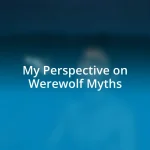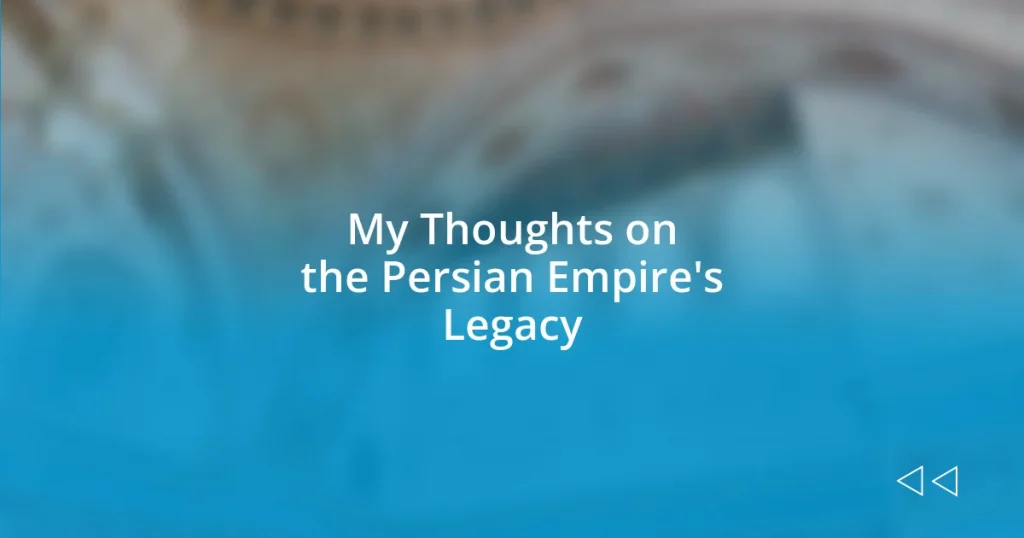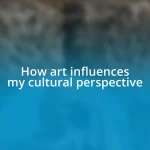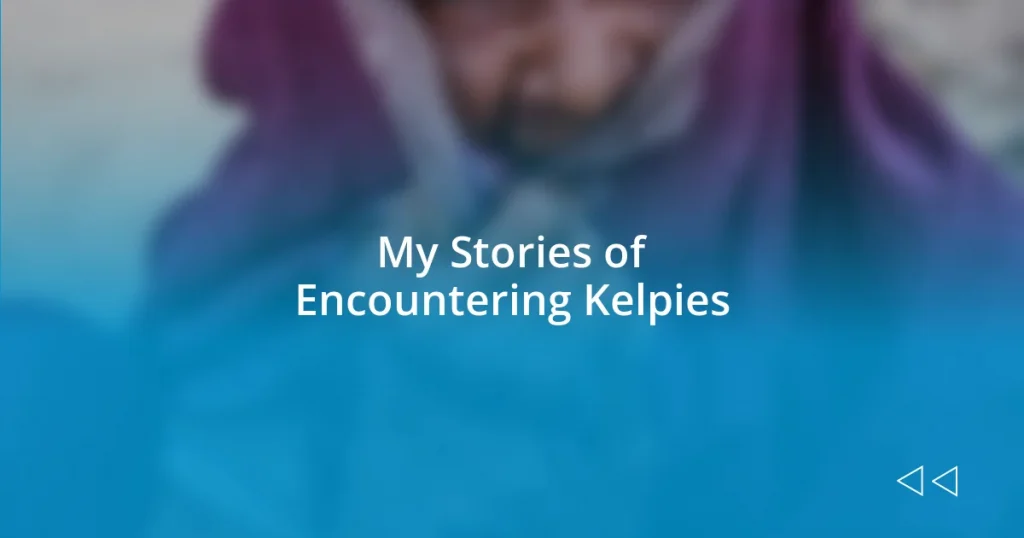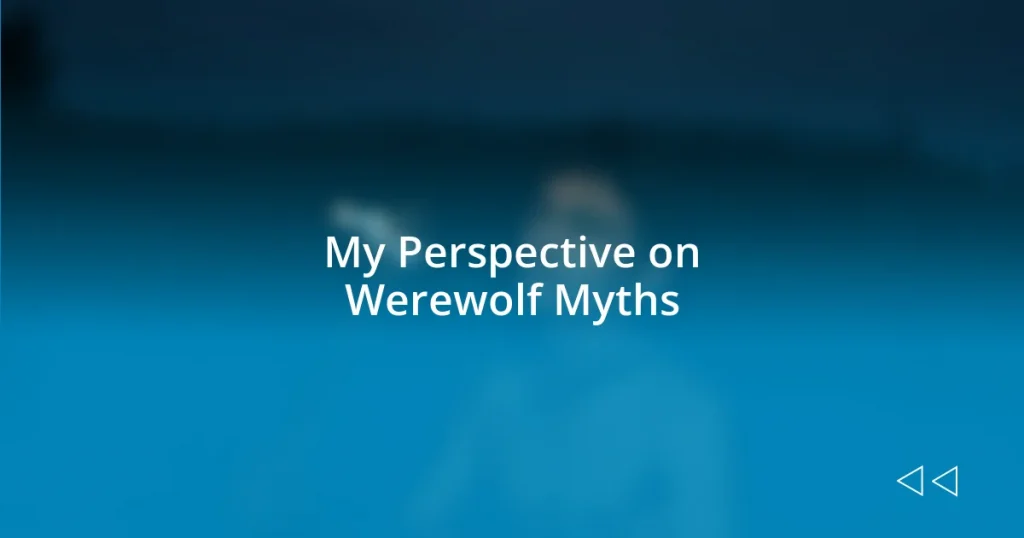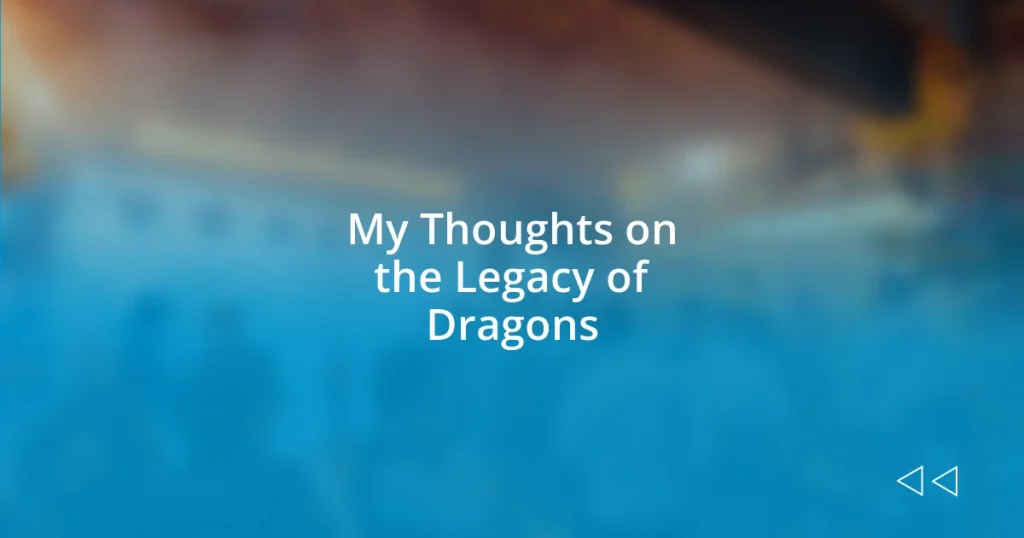Key takeaways:
- The Persian Empire’s innovations in governance, such as the system of satrapies and a vast communication network, laid the groundwork for modern administrative practices and regional unity.
- The empire’s legacy in art, education, and culinary traditions continues to influence contemporary society, bridging cultural gaps and enriching global practices.
- Preserving Persian heritage through architecture, festivals, and storytelling not only honors the past but also fosters cultural continuity and connection across generations.
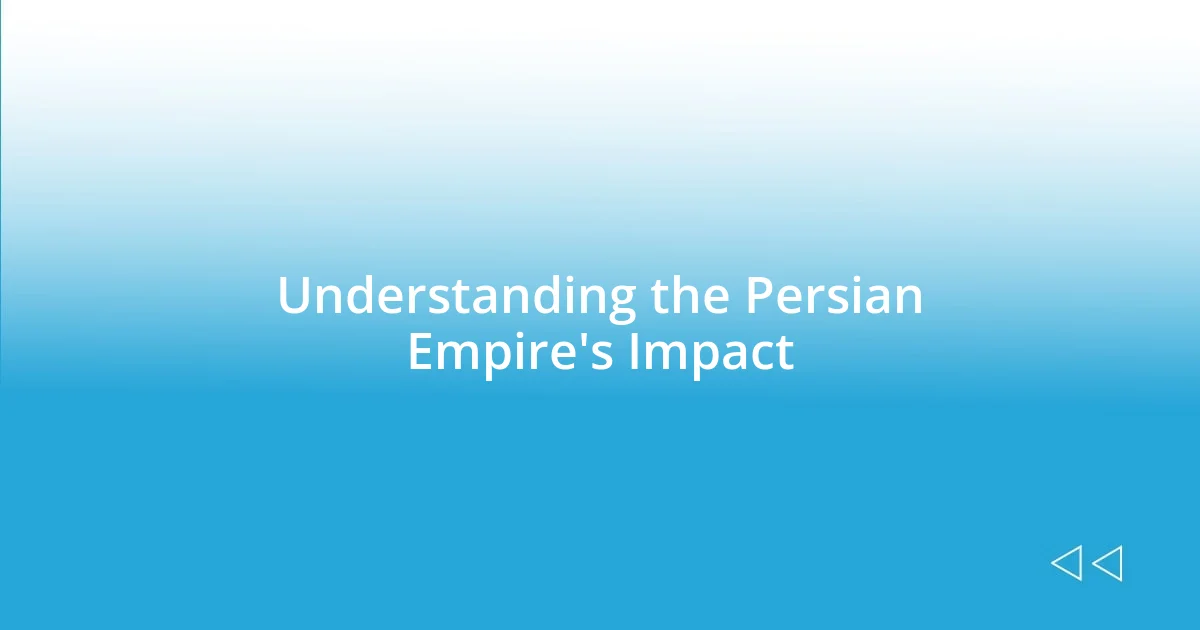
Understanding the Persian Empire’s Impact
The Persian Empire’s influence on culture and governance is staggering. When I first learned about their infrastructures, like the Royal Road, I couldn’t help but admire how this early communication system laid the groundwork for future civilizations. It makes me wonder—how many modern developments stem from such foundational ideas?
Another point that really resonates with me is the empire’s commitment to tolerance. Unlike many of its contemporaries, Persia embraced various cultures and religions, fostering a sense of unity. I often think about how this principle of coexistence could serve as a model for today’s world, especially when conflicts seem so prevalent.
Furthermore, their advancements in art and architecture continue to inspire countless generations. Whenever I see images of Persepolis, it evokes a sense of wonder for human creativity and ambition. Isn’t it fascinating how these monumental structures still tell stories of strength and artistry thousands of years later?
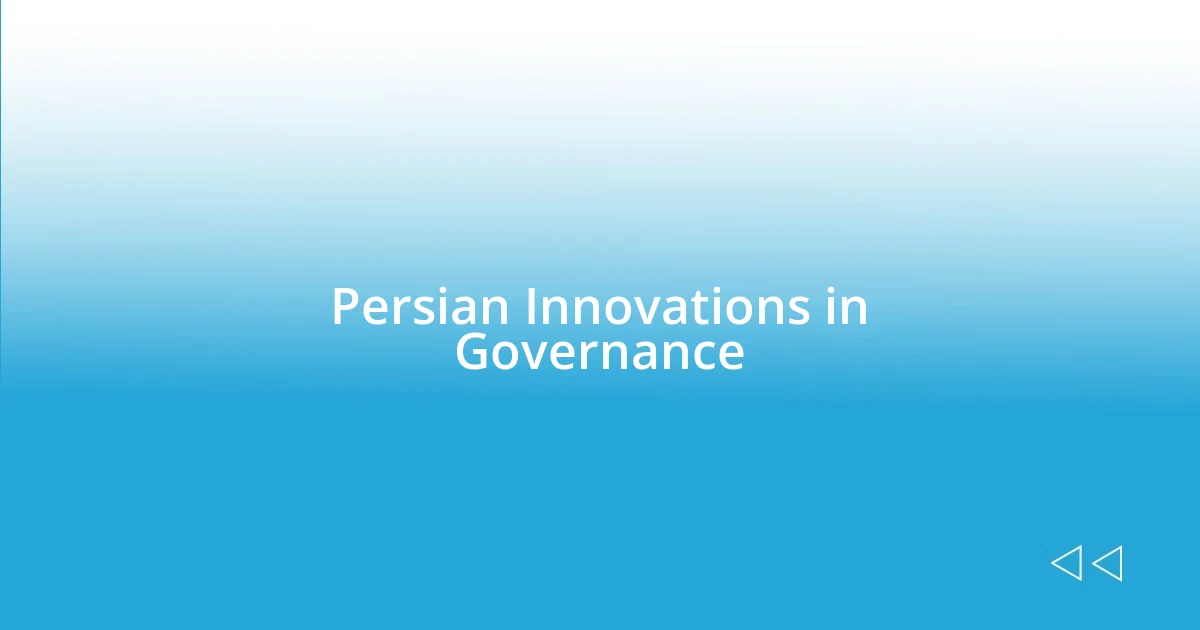
Persian Innovations in Governance
When it comes to governance, the Persian Empire was ahead of its time, demonstrating a sophisticated understanding of administration. I find it remarkable how they implemented a system of satrapies, which were essentially provincial governments, allowing local rulers to maintain a degree of autonomy while still being accountable to the central authority. This balance of power is something that I think modern states grapple with daily; it strikes me that the Persians were playing a long game in governance.
- Creation of a vast communication network, enhancing transportation and trade.
- Use of standardized laws across regions for consistency.
- Implementation of a postal system that facilitated efficient information relay.
- Promotion of skilled administrators who understood local issues.
- Encouragement of infrastructure projects, like roads and canals, that connected distant territories.
Reflecting on these innovations makes me appreciate how the seamless integration of various regions under a common governance framework laid the foundation for unity and economic prosperity. I often imagine the bustling marketplaces along the Royal Road, where diverse cultures converged, sharing not just goods but ideas and practices as well. This sense of inclusivity in governance feels particularly relevant today, as we navigate through complex social and political landscapes.
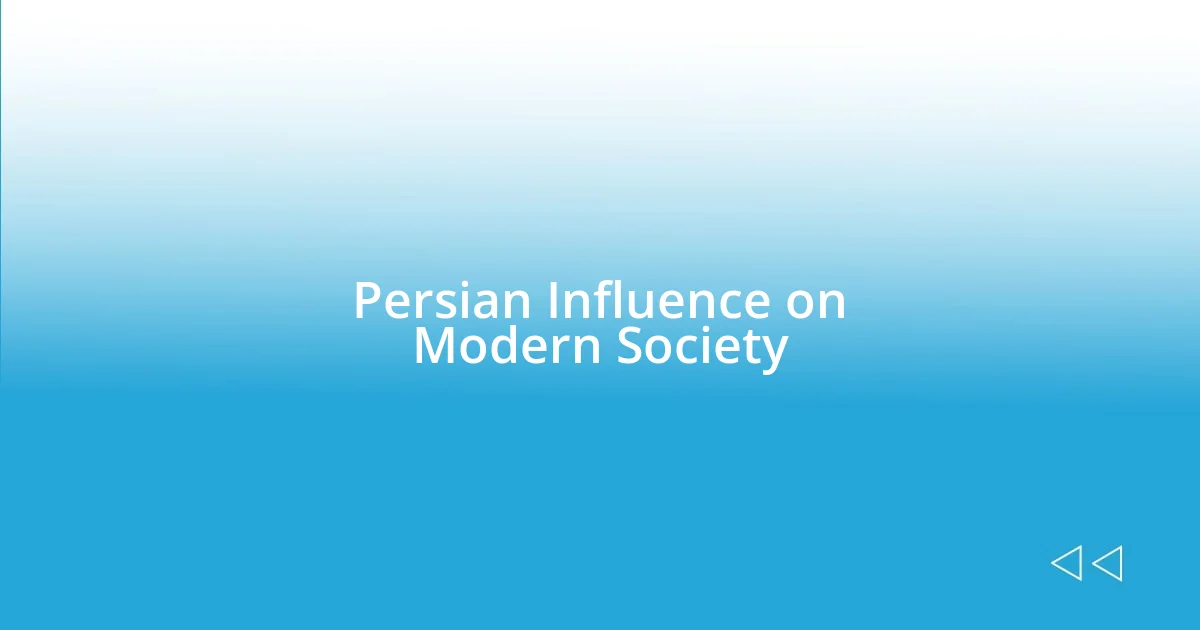
Persian Influence on Modern Society
The Persian Empire’s influence is palpable even in our nonverbal communication. I remember learning about the intricate designs found in Persian rugs and how these patterns often convey messages or stories. It makes me reflect on how art and symbolism can bridge cultural divides and express sentiments that transcend language barriers. In that way, the legacy of Persian artistry remains an unspoken dialogue in our society today.
Additionally, Persia’s approach to education has left a mark on our modern school systems. The establishment of places of learning back then emphasized knowledge and the importance of education in governance and society. Every time I see children engaging in spirited discussions in classrooms, I can’t help but think about how their thirst for knowledge harkens back to those ancient academies. It’s a testament to the enduring impact of Persian culture on our educational values.
Finally, I would be remiss not to mention the culinary influences that stem from Persian traditions. The varieties of spices and techniques used in cooking are deeply rooted in Persian kitchens. I can distinctly recall my first experience with saffron-infused rice; the flavor was enchanting. That moment not only opened my palate but also connected me to a millennia-old culinary heritage. The flavors we savor today continue to reflect the rich tapestry of the Persian Empire’s legacy.
| Aspects of Persian Influence | Modern Manifestations |
|---|---|
| Art and Symbolism | Contemporary Design & Fashion |
| Education Systems | Modern Learning Environments |
| Culinary Techniques | Global Cuisine Practices |
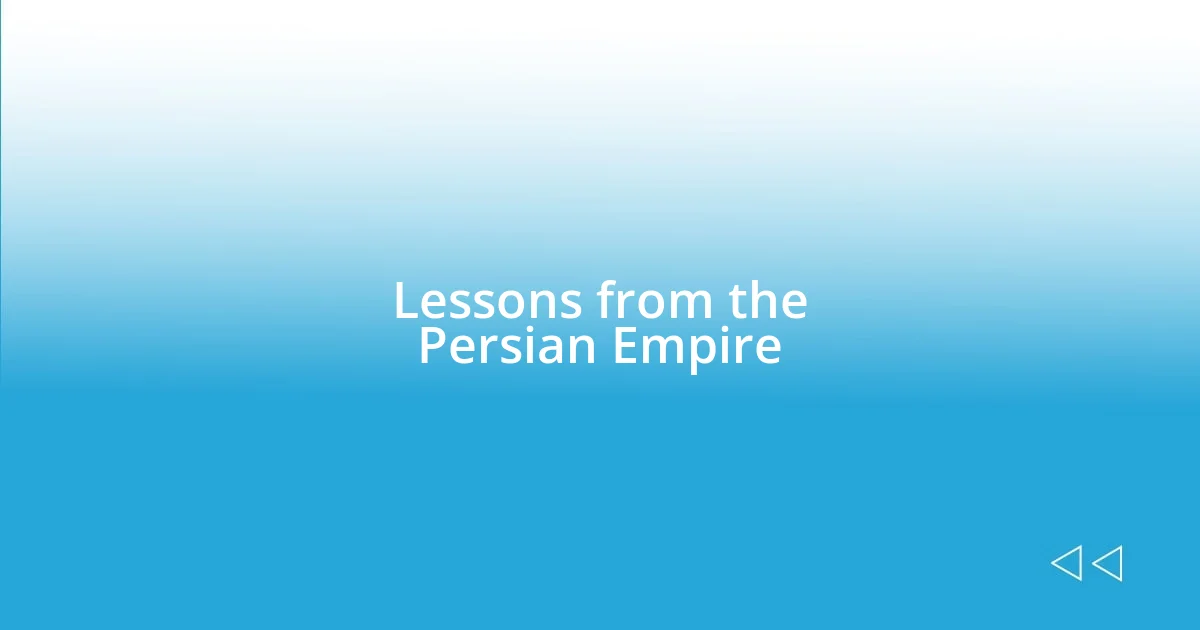
Lessons from the Persian Empire
One of the most striking lessons I glean from the Persian Empire is the significance of effective communication. The establishment of a postal system that connected vast territories really stands out to me. Imagine the hustle and bustle of couriers traveling along worn roads, swiftly moving important messages across regions. It’s a reminder of how essential communication is in our interconnected world today. I often ask myself: how would our own societies thrive if we prioritized efficient communication as they did?
Another insight I find particularly valuable is Persia’s commitment to standardized laws. This consistency fostered a sense of equality among diverse populations, which I think plays a critical role in maintaining harmonious coexistence. Reflecting on this, I can’t help but appreciate how our own legal systems strive for fairness, yet often face challenges. It makes me wonder: how can we be more inspired by their approach to create an even more equitable world?
Lastly, the emphasis on infrastructure development in the Persian Empire is a lesson that resonates deeply with me. Roads and canals were not just functional; they were vital links that enabled interaction among various cultures. I remember visiting an ancient aqueduct and feeling a sense of awe at how such engineering marvels facilitated trade and unity. It prompts me to consider: are we building the “roads” of our time, in terms of technology and community, to promote connectivity and understanding?
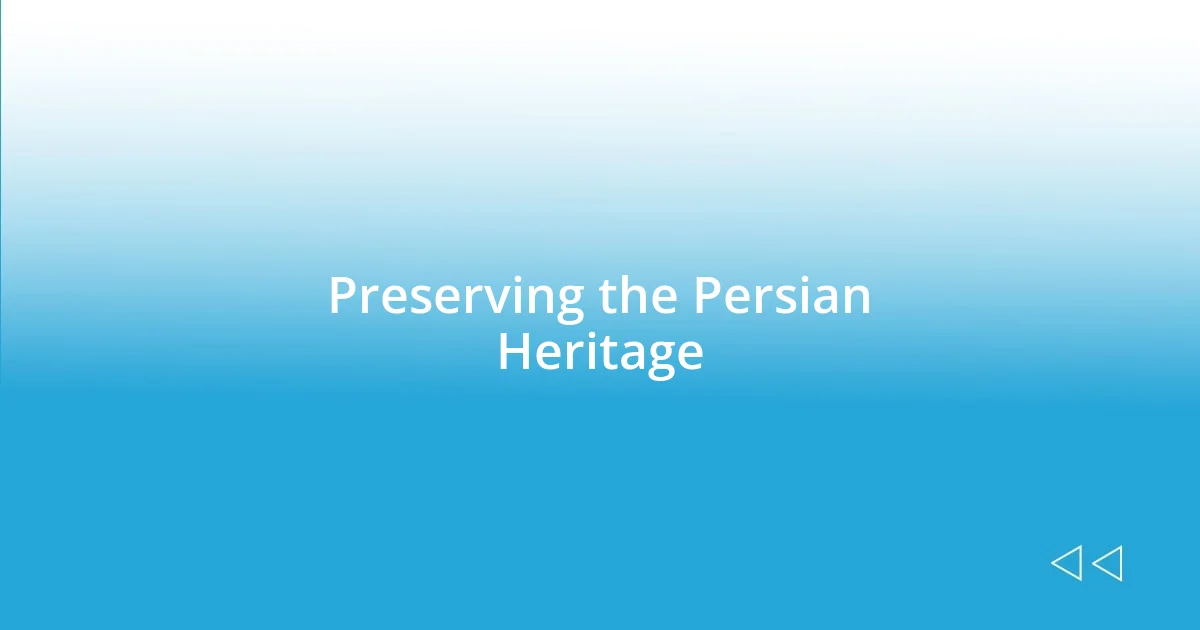
Preserving the Persian Heritage
Preserving the Persian heritage is a multifaceted task that goes beyond mere appreciation; it involves active engagement with the culture’s rich symbols and traditions. I remember attending a local exhibition featuring Persian miniature paintings, and the stories they told left me in awe. Each brushstroke appeared to capture the essence of Persian storytelling, making me wonder how many narratives are waiting to be discovered in our own world.
One of the most impactful ways I’ve seen this heritage preserved is through architecture. Visiting historical sites like Persepolis, I was struck by the grandeur that still stands despite the passage of time. It made me reflect on the importance of protecting such landmarks—not just for their aesthetic value, but as a testament to a civilization that valued artistry and innovation. It’s a gentle reminder to ourselves: how committed are we to preserving the stories and structures that define our identities?
Furthermore, I find that contemporary Persian festivals serve as vibrant cultural touchpoints that keep traditions alive. Participating in a Nowruz celebration, I was enveloped in the warmth of shared joy and renewal. The rituals felt like a beautiful thread connecting us to our ancestors. It’s moments like these that lead me to question: how can we continue to foster such unity across generations while embracing the evolution of our culture?


